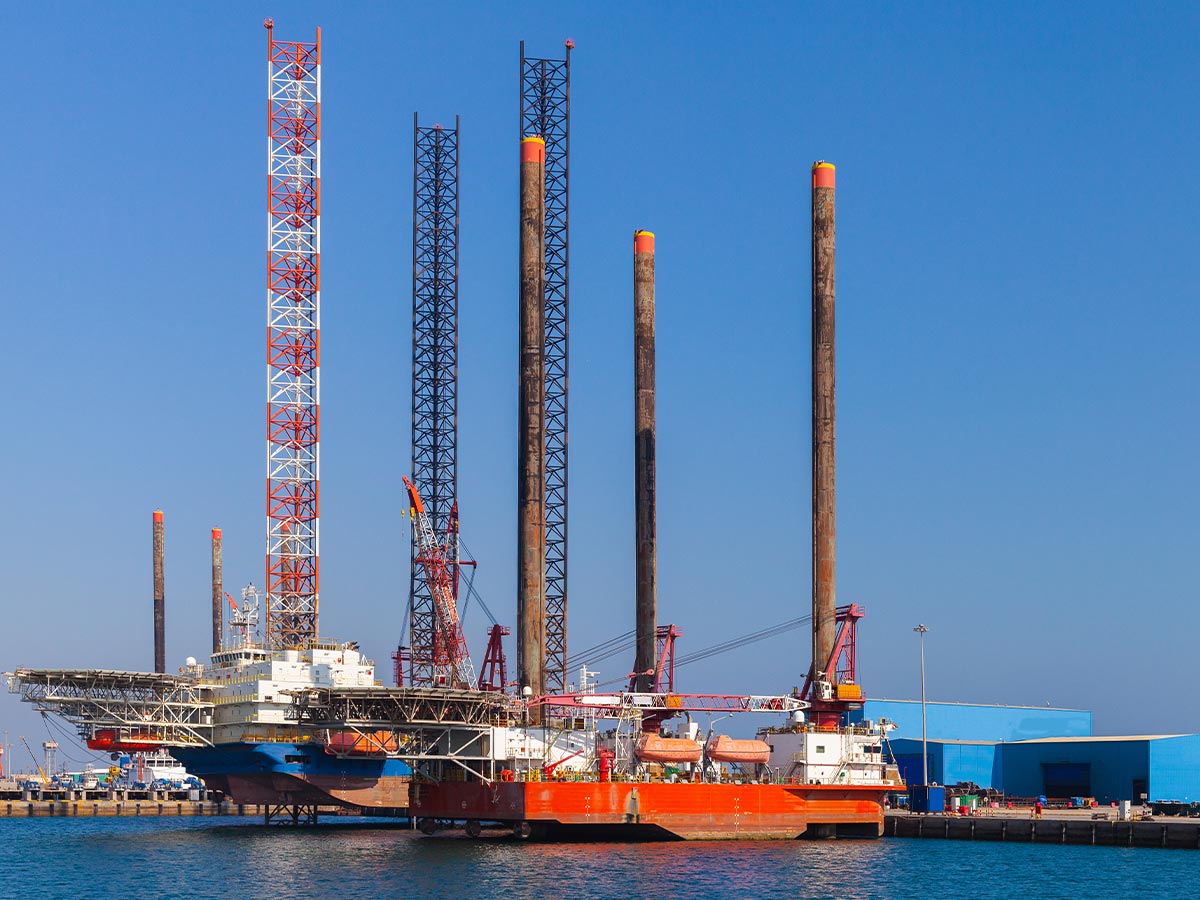U.S.A.

The United States now produces 75% of its crude oil supply domestically. The country has achieved the status of the leading global producer of crude oil, surpassing traditional oil giants like Saudi Arabia and Russia. This transformation, marked by a six-year streak of top production, is largely due to advancements in drilling technology and increased extraction capabilities. The U.S. has leveraged its vast domestic resources to enhance energy security and reduce dependence on foreign oil sources.
The three most significant oil fields contributing to U.S. production are the Permian Basin and the Eagle Ford Shale, both located in Texas, and the Bakken Formation in North Dakota. These fields are central to the U.S. oil boom, enabling the country to become less reliant on imported oil. The substantial output from these regions has not only bolstered domestic supply but also reinforced the U.S.’s position in the global energy market.
Netherlands

Oil was first discovered in the Netherlands in the early 1900s, marking the beginning of significant oil and gas production. They began importing oil to the United States in 1993 and has since been an essential ally in the oil industry. In 2023, they provided the U.S. with over 30 thousand barrels of oil.
The Netherlands accounts for approximately 0.99% of all oil imported into the United States. As part of its commitment to sustainability, the country is making significant efforts to reduce the environmental impact of oil drilling. These efforts include investing in cleaner technologies, improving safety standards, and transitioning towards more sustainable energy sources to minimize the ecological footprint of its oil industry.
India

In 2023, the U.S. received about 130,000 barrels of oil per day from India. Though the country is only responsible for 1.04% of oil imports into the U.S., India’s growing role in the global oil market reflects its expanding refining capacity and production capabilities. Other than the United States, India has strong oil ties to the Netherlands and the United Arab Emirates.
India's oil industry has experienced significant growth, with major oil fields located in the Gujarat region and offshore in the Arabian Sea. The country is home to key players like Indian Oil Corporation, which is vital for refining and distributing oil. Oil relations between India and the U.S. have strengthened as India’s demand for energy has risen. Indian oil companies are increasingly involved in international trade, enhancing their presence in the global market.
Libya

Libya accounts for 1.10% of the total oil imported into the United States. While this percentage is relatively small, Libyan oil is valued for its quality. The U.S. imports Libyan crude, known for its light, sweet characteristics, which are ideal for refining into high-quality gasoline and other petroleum products.
Oil was first discovered in Libya in the late 1950s in the Sirte Basin, located in the north-central part of the country. This discovery was pivotal for Libya, positioning it as a significant oil producer. The largest oil corporation in Libya is the National Oil Corporation (NOC), which manages the country’s oil resources, including exploration, production, and export operations.
Ecuador

Over the past 50 years, oil companies have extracted massive amounts of petroleum from the Amazon, damaging the rainforest. This damage has put the safety of the climate and the lives of Indigenous people who depend on it in peril. In 2023, Ecuadorians voted to ban the drilling of oil in the Yasuní National Park, one of the most biodiverse places on Earth. The US alone received almost 29 million barrels of oil from Ecuador's Amazon rainforest in 2023.
Consequently, the US is now by far this nation's greatest consumer of oil. Ecuador makes up about 1.42% of all oil the US imports. To maintain a strong demand for oil, the US frequently exchanges it with nations with which it is not necessary. In order to maintain high oil prices, the United States does indeed trade oil pointlessly.
United Kingdom

Approximately 1.43% of the US total oil imports come from the United Kingdom. The largest oil producer in the UK is Shell, with a market capitalization of approximately 206 billion dollars. To the dismay of many customers, the United States imports the majority of the oil from this country in order to maintain high oil prices and strong demand.
Oil was discovered in Scotland in 1851, and gas was discovered in England in 1896 when digging natural water wells for the Heathfield train station in Sussex. The found gas was used to power the station's lights. Wytch Farm Oilfield in Eastern Dorset was established in 1973 in a location of remarkable natural beauty, and it is now the largest oilfield in Western Europe.
South Korea

South Korea accounts for approximately 1.76% of the total oil imported into the United States. The U.S. began importing oil from South Korea as part of a broader strategy to diversify energy sources and reduce dependence on any single country. Over the decades, this relationship has expanded, contributing significantly to the U.S.’s diverse oil import portfolio.
In South Korea, the largest oil field is the Donghae-1 field, located offshore in the East Sea. SK Innovation is the largest oil corporation in South Korea, leading in oil exploration and refining. Most of South Korea's crude oil is refined and exported to countries in Asia, particularly Japan and China, highlighting its role as a significant regional energy player.
Nigeria

This country's oil was discovered in 1956 in Nigeria's Bayelsa State. ExxonMobil began operations in Nigeria in 1955 and is now the country's largest oil producer, producing over 40,000 barrels of crude oil daily from over 300 wells. Nigeria now accounts for 2% of total US oil imports.
In 2023, the United States purchased 160,000 barrels of petroleum from Nigeria. Nigeria was formerly one of the leading suppliers of petroleum to the United States. However, since Canada's oil sands output has expanded dramatically, the US has switched trade partners for petroleum products in favor of cheaper, closer oil.
Guyana

Guyana, located on the northeastern coast of South America, is emerging as a significant player in the global oil market. The country accounts for approximately 2.06% of the total oil imported into the United States. Its strategic position and increasing production have made it an important supplier as the U.S. diversifies its energy sources.
The largest oil field in Guyana is the Stabroek Block, which has been a major contributor to the country's oil output. The largest oil corporation in Guyana is ExxonMobil Guyana, a subsidiary of ExxonMobil. In 2023, Guyana produced almost 400,000 barrels of oil per day, highlighting its rapid growth and increasing influence in the global oil industry.
Venezuela

Venezuela supplies heavy crude oil to the United States. The trade relationship was formally established during President Richard Nixon’s administration in the 1970s as the U.S. sought to secure stable oil imports from Venezuela. The largest oil company in Venezuela, Petróleos de Venezuela, S.A. (PDVSA), manages the country's extensive oil reserves and plays a crucial role in this trade.
Venezuela accounts for approximately 2.15% of the total oil imported to the United States. Unfortunately, recent political and economic instability in Venezuela has impacted oil production and exports. Despite these challenges, Venezuela remains a notable player in the global oil market, with vast reserves and a complex industry that continues to influence international trade dynamics.
Colombia

Colombia is the source of nearly 3% of the oil imported into the United States. The northwest and center of this country house the majority of the country's enormous infrastructure for distributing crude oil. Five of Colombia's major oil pipelines, which total seven, link the country's oil production areas to the Coveas export terminal in the Caribbean, where oil is transported to the United States.
More than 80% of Colombia's crude oil pipeline capacity is owned by Ecopetrol, and its Cenit subsidiary is the conduit for all other product pipelines. They made more than 171.8 billion Colombian pesos in income in 2023, a nearly 2% decline from 2022. Attacks on different pipeline system components have forced the suspension or cancellation of important projects intended to link the Llanos Basin with the port of Buenaventura on the Colombian Pacific.
Iraq

The United States imported around 115,000 barrels of petroleum from Iraq in 2023. That represents about 2.85% of US oil imports. It has been decades since Operation Iraqi Freedom’s bombs first landed in Baghdad. While most of the U.S.-led coalition forces have long since gone, Western oil companies are only getting started.
Iraq's domestic oil sector was completely nationalized and closed to foreign oil corporations prior to the 2003 war. After a decade of fighting, it has been completely privatized and taken over by international companies. Bush and Obama administration officials have even served as advisers to oil companies on their projects in Iraq after leaving office.
Brazil

Brazil supplies approximately 3.5% of oil imported to the United States. The Santos Basin and Campos Basin provide the country with the majority of their oil. Trade relations between Brazil and the U.S. in oil began to solidify in the late 20th century as both nations sought to diversify their energy sources and markets. Brazilian oil, primarily light, sweet crude, plays a crucial role in U.S. refineries.
This trade not only supports U.S. energy security but also significantly boosts Brazil’s local economy by generating revenue and creating jobs in oil-rich regions. The economic benefits extend to infrastructure development and local businesses, enhancing the overall prosperity of the areas involved in oil extraction and export.
Saudi Arabia

4.55% of the oil imported by the U.S. comes from Saudi Arabia. The Strait of Hormuz is used by ships to deliver the majority of Saudi Arabia's oil exports. The world's largest state-owned oil company, Saudi Aramco, is based in Saudi Arabia and was valued at over $121 billion in 2023.
In 1938, huge reserves of oil were discovered in Saudi Arabia. President Franklin Roosevelt deemed Saudi oil essential to American security in 1943 as worries about the war's impact on American oil output increased. Roosevelt and Saudi King Abdul Aziz had a meeting on board a U.S. ship in the Suez Canal in February 1945 to explore forging deeper connections. A few years later the country quickly became the world’s largest exporter of oil.
Mexico

Roughly 8.2% of the oil imported into the United States comes from Mexico. According to US Energy Information Administration data, it is on course to overtake Saudi Arabia as one of the largest exporters of crude and oil products to the US for a fifth consecutive year. The majority of the crude oil and processed products that are imported and exported by the United States are from Mexico.
Mexican heavy oil may be mixed to create the gasoline, diesel, and jet fuel that power the US Gulf Coast refineries and keep the economy humming. State-owned oil corporation Pemex supplies all commercial gasoline (petrol/diesel) stations in Mexico, exclusively. The largest oil field in Mexico, and one of the biggest in the world, is Cantarell Field.
Canada

Canada accounted for around 54.29% of all crude oil imports to the United States of America in 2024. Operating since 2010, the original Keystone Pipeline System is a 3,461-kilometre (2,151 mi) pipeline delivering Canadian crude oil to U.S. Midwest markets. Less than 1% of Canadian exports were delivered to other countries.
The annual amount of Canada's black gold exports to the U.S. has increased from 486 thousand barrels in 1995 to 1.6 million barrels in 2023. The value of crude oil exports has surged almost fifteen times in those thirty years. The importance of other countries to the U.S. oil import market has changed, but Canada's crude has been even more significant over time.
 Author
Jennifer Freehill
Last Updated: August 30, 2025
Author
Jennifer Freehill
Last Updated: August 30, 2025